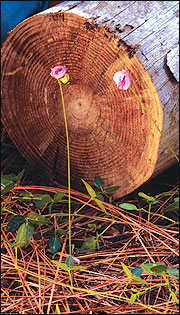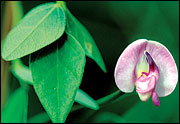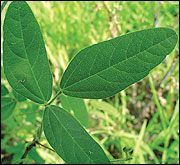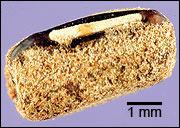Wild bean
- Strophostyles spp.
- Fuzzybean
Forb
Unlike many plants, wild beans grow well even on acid soils, such as those found in many midwestern uplands as well as the pine range.
©Ted Bodner, USDA-NRCS Plants Database
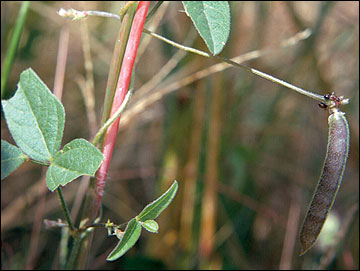
Wild bean pods are hairy, from 1 to 3-1/2 inches long, depending on species.
©Ted Bodner, USDA-NRCS Plants Database
Description
Three species of wild bean occur in the Midwest. Wild beans grow on many soil types and textures. Each of the three species is a somewhat small plant with twining vines and relatively small leaves composed of three leaflets. Seeds are present in hairy pods 1 to 1-1/2 inches long (Stropostyles leiosperma) or 1-1/2 to 3-1/2 inches long (S. helvola and S. umbellata). It is often found climbing up other plants.
Bloom period
May to October
Use by bobwhites
As with most legumes, bobwhites will eagerly consume wild bean seeds where available. Furthermore, it attracts many insects beneficial to broods.


